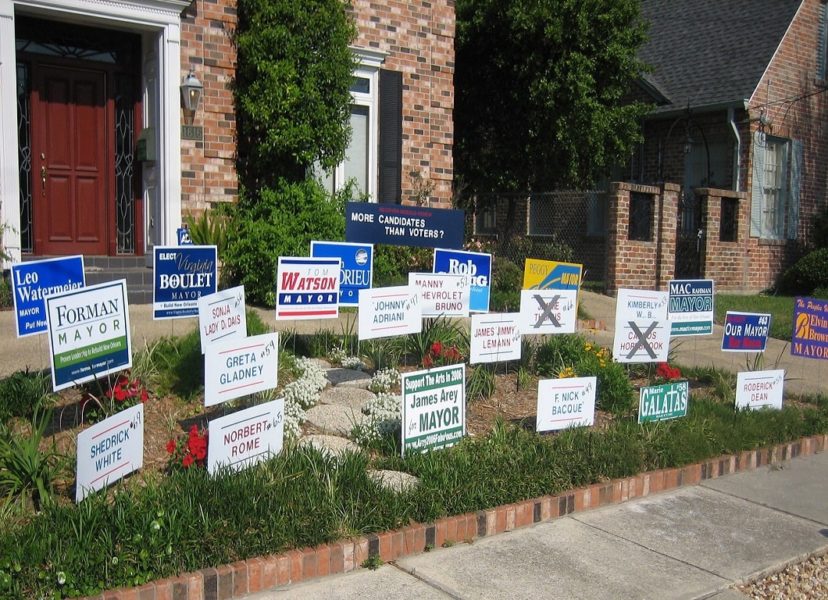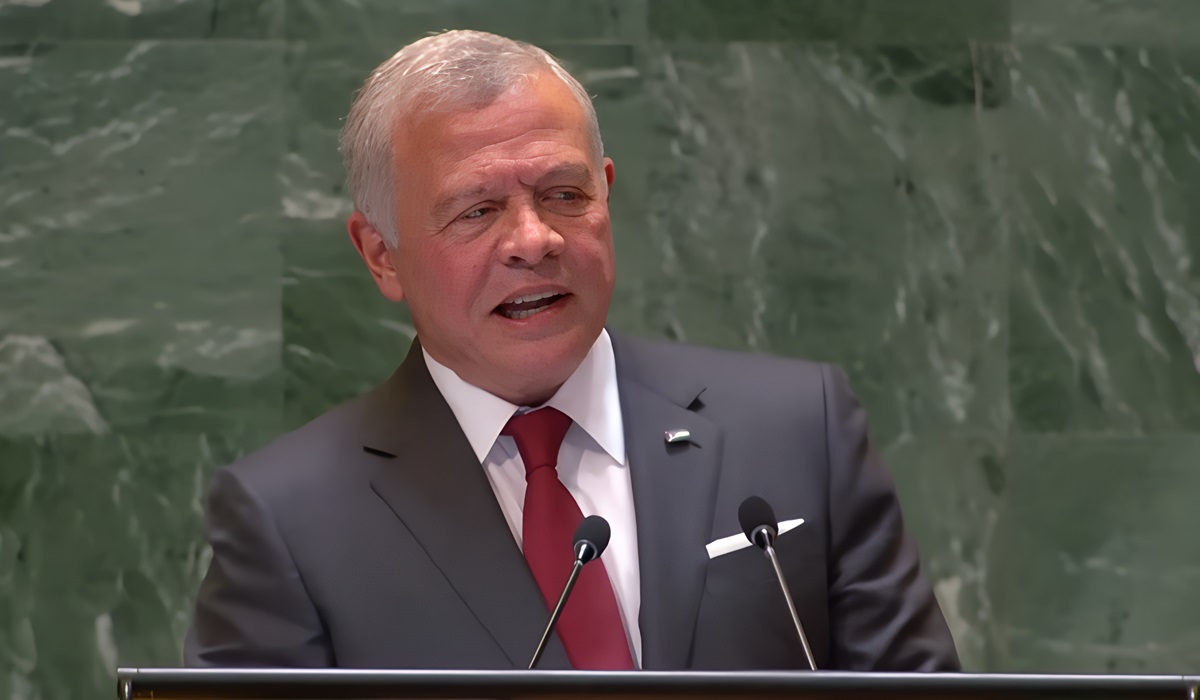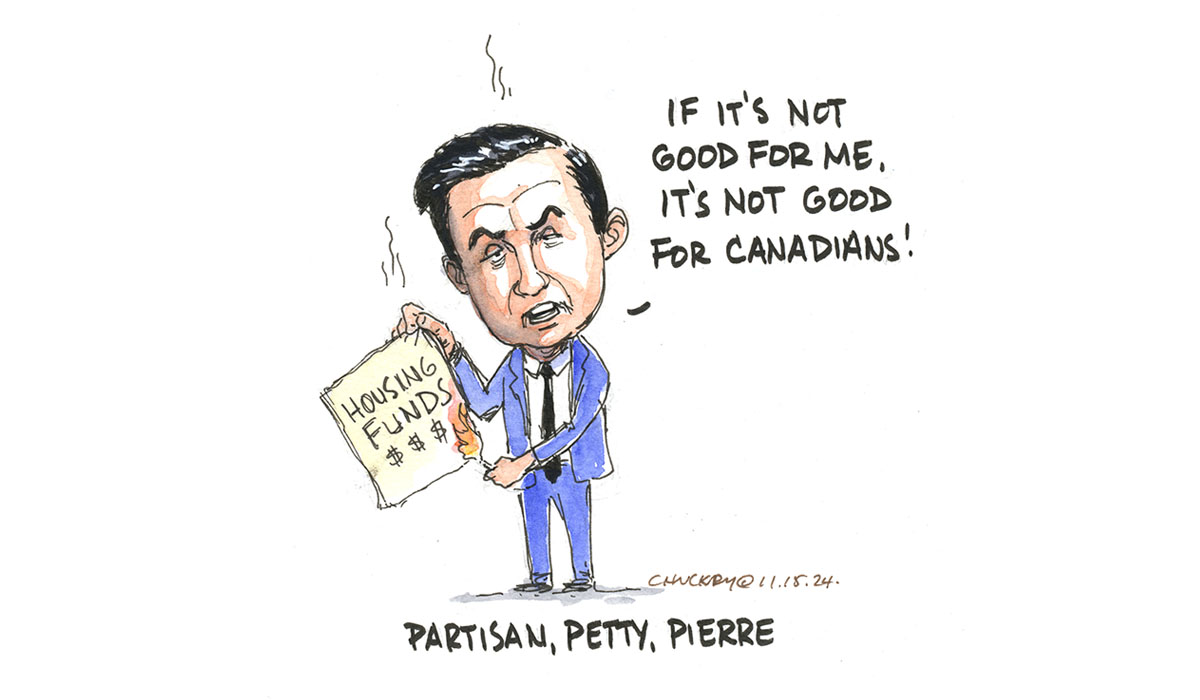Are Election Signs Worth the Environmental Destruction and Inequity They Cause?
- Nick Kossovan
- Breaking News
- Elections
- Trending
- September 24, 2022

As autumn transitions into winter, leaves will turn golden yellow, burnt orange, crimson red, bloody purple, and russet brown before falling and blowing in the wind, scattering everywhere. With the upcoming Toronto election, and elections taking place throughout Ontario, soon election signs will be scattered everywhere joining the autumn leaves.
Does voter participation correlate with election signs?
Some stats from the 2018 Toronto election:
- 1,880,371 eligible voters.
- 769,044 votes cast
- 41% turnout
It is impossible to assert election signs influence voter engagement when over 1.1 million voters do not turn out. A 41% turnout makes a strong case for the ineffectiveness of election signs. A more recent illustration of the ineffectiveness of election signs; voter turnout in the June Ontario election was only 43.53%, the lowest in any Ontario provincial election.
Toronto only allows election signs to be displayed 25 days before election day (Friday, September 29th – Monday, October 24th).
Within a month, most election signs will end up in landfills.
Can just over three weeks of “sign exposure” sway people to (a) bother to vote and (b) vote for a particular candidate? Based on the abysmal voter participation rate in Toronto elections, the highest post-amalgamation being 54.67% in 2014, I would say “No.”
While signs do not appear to be effective at motivating people to vote, they are incredibly effective at creating visual and plastic pollution. Plastic pollution, the creation and disposal of plastic, is a significant contributor to our current climate change crisis, which almost everyone seeking political office claims to care about.
For personal political gain, candidates hoping to become Toronto’s next mayor or obtain a seat on council put up election signs that are an eyesore, a distraction to drivers, often obstruct visibility, and environmentally destructive. In other words, candidates trash our environment hoping to “possibly” gain a few votes and to satisfying their ego.
At the risk of being overly candid, election signs are used by candidates who are more concerned about their political aspirations and the perks that come with it than they are about the environment.
Voters don’t vote for election signs.
Voters vote for candidates they believe in.
Voters vote for candidates who inspire them to vote.
Elections should be about candidates putting forward ideas, opinions, platforms, their community, and their leadership experience. In 2022 an election should not involve plastering signs everywhere which will get strewn about by the wind or vandalized and tossed into the road or on someone’s property.
Yes, I am implying that election signs should be banned outright due to their negative environmental impact. Such a paradigm move would require Toronto’s leadership to advocate that the city be at the forefront of proactively addressing climate change.
Creating less garbage is undeniably the best thing we can do for our environment. Candidates trying to defend using election signs, while hypocritically claiming to care about the environment, point to being able to recycle election signs, as if all the election signs still standing on October 25th will be removed and recycled.
Recycling has a carbon footprint. Zero carbon footprint is achieved by not creating waste that ends up in a landfill or needs to be recycled in the first place.
Additionally, election signs create an equitable issue when it comes to a candidate’s financial ability to purchase election signs. Entry into the political arena be it municipal, provincial, or federal, requires money, hence why most of our political leaders hail from money. I could not even hazard a guess what a serious mayoral candidate for a city the size of Toronto, or someone running for council in the new “oversize” wards, will spend on election signs.
A candidate who can afford election signs is at an advantage or candidates who don’t have their financial means, and I’m just referring to the cost of election signs. There’s also the cost of flyers, buying advertising (radio, Internet banners, print), renting and furnishing a campaign office, purchasing promotional items (Whatever happened to campaign buttons?), etc.
How many great candidates do not put themselves forward due to financial constraints? While banning election signs will not create a utopian level playing field, it will remove the pressure (If those I’m running against are putting up election signs, I must do the same.) of taking on a considerable expense required to run a serious campaign along with eliminating the many negative effects election signs have on our environment.
I would have massive respect for candidates who donate the money they would spend on election signs to a local food bank or shelter. Instead, candidates would rather plaster election signs around their community for political gain than donate their election sign money to a local charity—helping the community they say they care about.
My jaw would drop if I ever saw a print ad, or Internet banner, from a candidate saying: Instead of creating election signs that end up in landfills, I donated $5,000 to the Yonge Street Mission. I care about our environment and community.
Social media’s reach is undeniable. Grassroots marketing (READ: word of mouth) is still just as effective as it was when politicians stood on soapboxes in medieval European town squares. A candidate who has been active in their community does not need election signs to establish name recognition. Unknown candidates are unknown because they have not been active in their community. The belief that election signs will increase name recognition or constituent support is lazy thinking.
Candidates who have the financial privilege to use election signs, and do, cannot claim to care about the environment. Asserting to be concern about climate change would be hypocritical and an outright lie. It is hypocrisy and lying by politicians that have disengaged people from politics, and it is the main reason they don’t take part in elections.
Consider supporting those candidates who don’t use election signs, which in 2022 are needless and wasteful. Candidates who do not use election signs should be rewarded with your votes for leading by example, which is a trait we should expect from all our leaders.
____________________________________________
Nick Kossovan, a self-described connoisseur of human psychology, writes about what’s on his mind from Toronto. You can follow Nick on Twitter and Instagram @NKossovan








